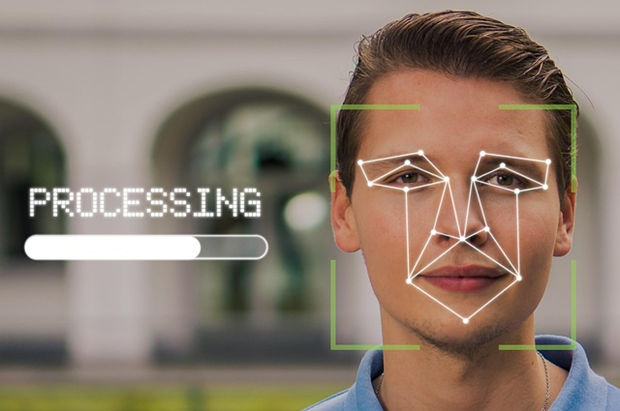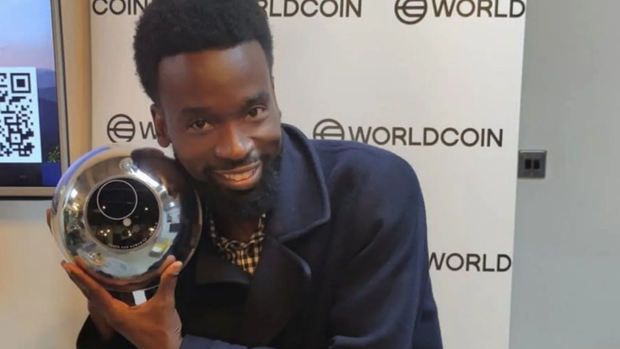Biometric Security for Crypto Wallets: What You Need to Know in 2025
For any business owner, the issue of paying for their goods and services is not the last one. Perhaps it was the search for a convenient tool for faster transactions that brought cryptocurrency out of the foggy world of the anonymous creator of Bitcoin, Satoshi Nakamoto. Cryptocurrency has evolved from a curiosity into a practical tool for global trade in recent years.
The ability to make payments without borders has attracted the interest of many companies, from Microsoft to Starbucks. No, you can’t pay for your cup of coffee at the checkout with Bitcoin (well, unless you’re in El Salvador right now), but you can buy a gift certificate on a special platform and load it into the Starbucks app. Tesla offers a range of products that can be paid for with, guess what currency - yes, Dogecoin-eligible products.
With the growing number of cryptocurrency holders around the world, and there are now more than 500 million of them, digital assets are becoming part of the financial world. Some invest with long-term growth in mind, while others make quick purchases with meme coins like Dogecoin and PEPE. If you’re evaluating major providers, reading a binance wallet review can help assess how their approach to storage, access, and security compares to others in the space. But what all users have in common is the problem of secure storage. This is where crypto wallets come in, combining convenience, control, and security in one interface.
How Are Crypto Wallets Adapting to the Rising Threats in Digital Security?
Cryptocurrency wallets have long used passwords, encrypted keys, and PIN codes to prevent unauthorized access. But the more popular digital currencies become, the more often they come to the attention of cybercriminals. Since 2022, there has been an inverse correlation between the total amount of losses from cyberattacks on crypto wallets, in relation to the number of attacks themselves, suggesting a shift from large-scale breaches to more frequent, precise attacks.
This year, cryptocurrency-related thefts have exceeded $2.17 billion. Hacks into the personal wallets of cryptocurrency owners have become common. The high-profile Bybit hack, linked to North Korea’s Lazarus Group, left $1.5 billion in stolen assets. These incidents highlight the urgent need for multi-layered wallet protection.
Cold wallets remain a popular choice. They offer an extra layer of security, but on the downside, they are susceptible to damage and loss. Additionally, owners can lose access to their assets if they forget their private keys.
Attackers are now using phishing and social engineering to bypass even multi-signature security. As crypto wallets evolve into Web3 super apps that integrate everything from DeFi to identity management, biometrics are coming to the rescue. From facial recognition to iris scanning, biometric security measures can help authenticate users with greater accuracy. Let’s find out more in this blog.
Biometric Security of Crypto Wallets: The 2025 Standard
Biometric security is based on the uniqueness of biological characteristics. Facial features, fingerprints, voice characteristics, and even behavioral patterns, such as typing rhythm or interaction with a device, have unique features. Thus, when choosing additional verification tools, you are you and not someone else. Do you remember Mission Impossible? But this is just the fantasy of the director and scriptwriters. In reality, biometric data has become an ideal way to authenticate users. Scanning the iris has gained popularity, noticeable to the naked eye. Especially with the advent of Worldcoin (WLD).
Launched in beta in 2023, Worldcoin quickly attracted the attention of the whole world. Its developer, Tools for Humanity, co-founded by Sam Altman, introduced its signature “balls” — basketball-sized devices that scan a user’s iris to generate a secure World ID. Sounds complicated. But this biometric identifier distinguishes real people from bots and provides access to the World App crypto wallet.
As of mid-2025, more than 6.7 million users have created a World ID, earning rewards in WLD tokens. Biometric data, such as iris patterns and fingerprints, is non-transferable and difficult to copy, making it much more secure than traditional passwords or PINs. Unlike any password, they are impossible to forget. And even more so, lose — an undeniable advantage. This reduces the risk of phishing, credential theft, and social engineering attacks. Biometric authentication provides speed and convenience. Users can unlock wallets or restore access with a simple scan, eliminating the need to remember complex credentials.
Platforms like Trust Wallet, Zengo, and Fireblocks now support multimodal biometrics, combining facial recognition with behavioral analytics to authorize large transactions. Advanced features like activity detection and multi-party computation (MPC) help protect against deepfake attacks and spoofing attempts.
Biometric wallets are also increasingly integrating with decentralized identification (DID) systems, allowing users to verify their identity on Web3 platforms without revealing sensitive personal data. This evolution is turning crypto wallets into multi-functional super apps — secure hubs for finance, identity, and access control in a decentralized digital economy.
Biometrics and Crypto Wallets: Balancing Security with Privacy
We have already considered the undeniable advantages of biometric authentication. These also include quick access to funds, unlike many other financial instruments, such as bonds and stocks, for example. However, in addition to the advantages, there are some nuances. Unlike passwords, biometric data is permanent. You will not be able to restore your fingerprint or iris pattern if they are compromised. This immutability creates long-term risks, the relevance of which will certainly increase in the near future. Privacy issues remain at the forefront. In 2024, Worldcoin faced a negative reaction from regulators in Colombia, Spain, Hong Kong, and Singapore due to the practice of iris scanning. By early 2025, Brazil banned Worldcoin entirely, citing ethical concerns related to the collection of biometric data. Critics argue that offering cryptocurrency tokens in exchange for sensitive data undermines the principle of informed consent, especially in economically vulnerable regions. We often object to a company storing our email address. Here, we are talking about more sensitive and personal data.
To address these issues, Worldcoin and other platforms now claim to use zero-knowledge biometric systems. This means that the data is transformed and stored in unreadable formats that are inaccessible even to the provider. For example, Swiss wallet provider Relai has integrated Keyless technology, ensuring that biometric templates are never stored on devices or in the cloud, setting a new standard for privacy-preserving authentication.
However, biometric systems are not foolproof. They can be expensive to implement. But as deepfake technologies advance, activity detection and multi-factor authentication are becoming essential to prevent spoofing and impersonation attacks.
In 2025, the challenge is not only to secure wallets, but to ensure security without compromising the autonomy and privacy of users. The crypto industry needs to tread carefully to ensure that biometric innovation does not outpace ethical safeguards.
The Way Forward
As cryptocurrency adoption accelerates and digital assets become part of everyday transactions, the need for secure, user-friendly wallets has never been greater. Biometric authentication is emerging as a powerful solution: offering speed, accuracy, and convenience. Yet, with great innovation comes responsibility. The crypto industry must balance cutting-edge security with ethical data practices, ensuring that biometric systems protect users without compromising their privacy. In 2025 and beyond, the wallets that succeed will be those that earn trust. Not just through technology, but through transparency.
Copyright © . All Rights Reserved


